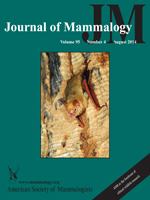To balance conflicting demands for food and safety from predation, foraging individuals trade off time between feeding and safety by vigilant behavior. We studied the behavior of red foxes (Vulpes vulpes) and pine martens (Martes martes) scavenging at carcasses of moose (Alces alces) killed by wolves (Canis lupus) in Sweden. Red foxes were observed visiting carcasses more often and at a higher frequency than pine martens, which restricted carcass use to certain habitats. Both species followed a similar daily and seasonal activity pattern. The seasonal peak of scavenging, in April for pine martens and April–May for red foxes, showed that remains of wolf-killed prey are likely an important food source for both of these species during reproduction. Pine martens displayed an overall higher level of vigilance and a lower level of feeding than red foxes. Vigilance by pine martens was affected by habitat, visibility, and vegetative cover at carcass sites. Pine martens did not display increased vigilance during time periods of high red fox activity and there was no effect of the time of day. Our study showed support for the importance of interspecific predation risk leading smaller predators to trade off foraging for increased vigilance, but habitat characteristics affected vigilance patterns more than the mere presence of a larger predator.
How to translate text using browser tools
1 August 2014
Feeding under high risk of intraguild predation: vigilance patterns of two medium-sized generalist predators
Camilla Wikenros,
Sophie Ståhlberg,
Håkan Sand
ACCESS THE FULL ARTICLE

Journal of Mammalogy
Vol. 95 • No. 4
August 2014
Vol. 95 • No. 4
August 2014
intermediate predators
intraguild predation
Martes martes
scavenging
sympatric predators
vigilance
Vulpes vulpes




